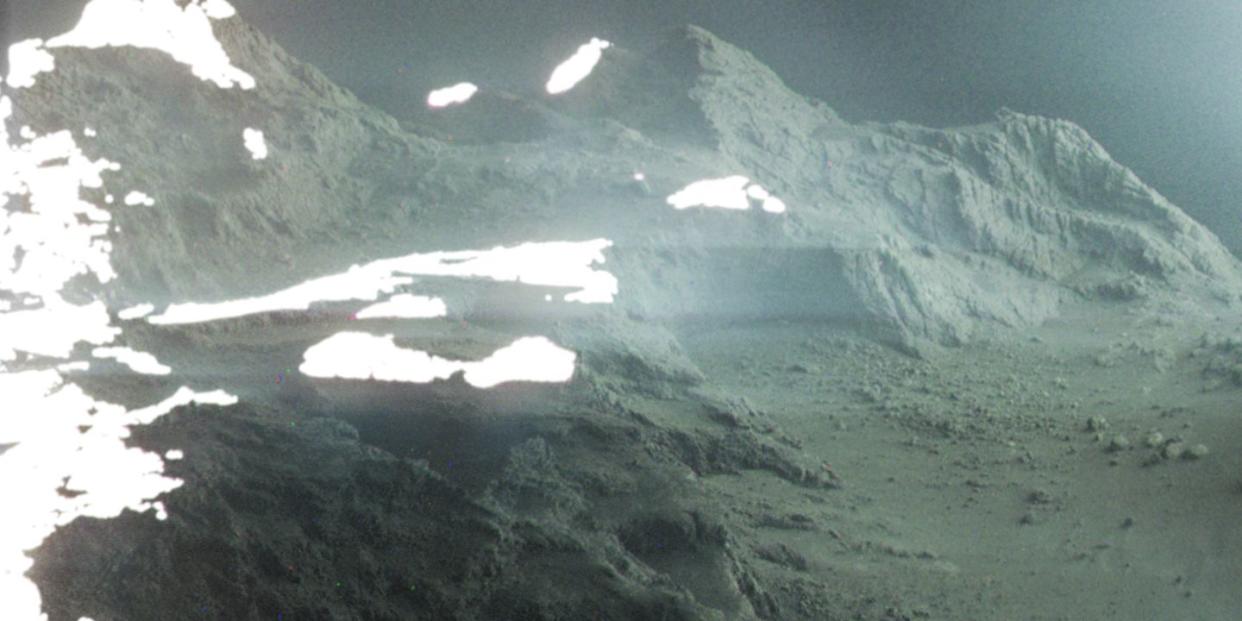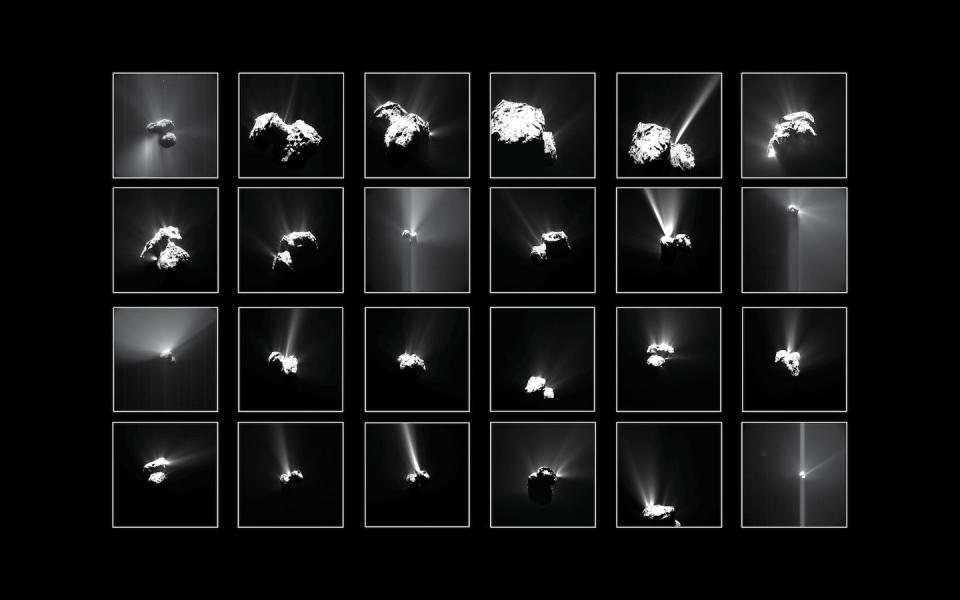This is what it would be like to stand on the surface of a comet, according to the European Space Agency

The European Space Agency (ESA) has shared an incredible close-up photo of a comet, allowing amateur astrologers to understand more about what it would be like to walk on the surface.
The never-before-seen-image was captured by the now obsolete Rosetta Spacecraft in 2014 after it touched down on Comet 67P/Churyumov-Gerasimenko (67P/C-G) – only the second spacecraft in history to do so after Rosetta’s lander, Philae.
Rosetta's OSIRIS narrow-angle camera snapped the photo from space around two years before the craft's €1bn, ten-year mission was terminated in a planned crash into the surface of Comet 67P. It shows one of the geological regions on the larger of the two comet lobes – dubbed 'Seth' – around 17 miles from the comet's centre.
The sharp profile in the lower part of the image is the 134-metre Aswan cliff. Rosetta's 11 on-board instruments were able to scan the surface of this cliff, allowing scientists to understand more about its erosion as the comet orbited closer to the sun. Gas and dust samples were also taken and analysed.

Spanish amateur astrologer Jacint Roger Perez stitched this image together from three close-up shots.
Rosetta was launched in 2004 and took a decade to reach the comet, passing the Earth, Mars and two asteroids on the way. During the most intense part of the cruise-phase, the craft endured 31 months in deep-space hibernation.
You can view the full Rosetta archive here.
('You Might Also Like',)

